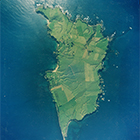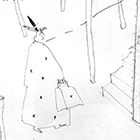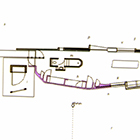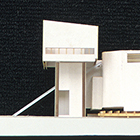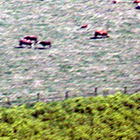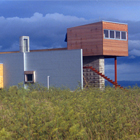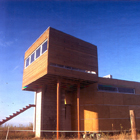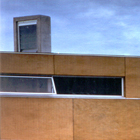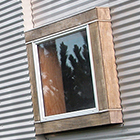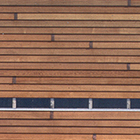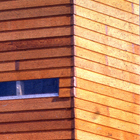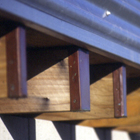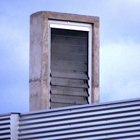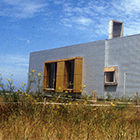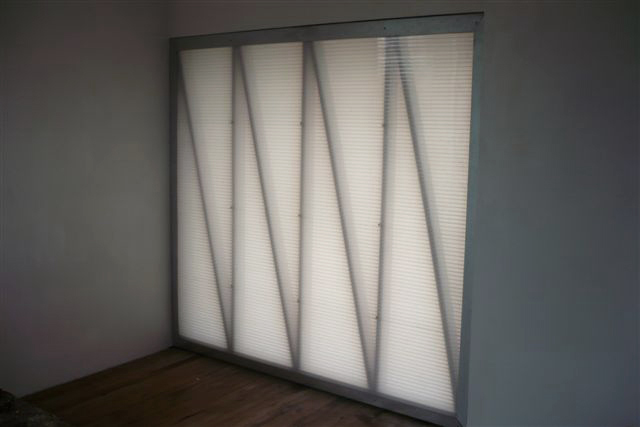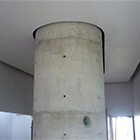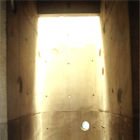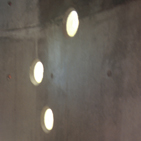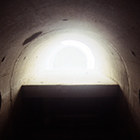House on Motiti
| Program | HOUSING |
| single family private housing | |
| Scale | 120 sqm |
| Stage | Built |
| Client | Hoete whanau O Motiti |
| Budget | € 100000 |
| Density | 1 habitable room |
| Design Year | 2013 |
HOUSE ON MOTITI ISLAND (‘TALKING BUILDINGS’ DIATRIBE)
This article first appeared in The Paradox Of Contemporary Architecture (Wiley Academy 2001) © the author: Anthony Hoete WHAT Architecture 2001
The house was built for a man who was born and raised on Motiti Island, visible as a field raised from the sea from the coast of another, much larger land: the North Island of New Zealand. The spatial proximity of the two islands has not lead to cultural homogeneity, however. The 30-kilometre stretch of sea between them has historically isolated, and therefore historically insulated Motiti from many of the devices of Western existence, including architecture.
Paradise Lost
One of the many stories of architecture starts at a time of innocence, a primal scene of uncorrupted naivety, a Garden of Eden, in which the first shelter was built, a simple hut. With the rise of luxury and the spread of vice, the purity of this unadorned building was corrupted. The hut no longer simply served its function; it became decorated with ornament. The naked body of the hut became clothed. Building became architecture. To the world, New Zealand is paradise, an idyllic dreamland uncorrupted by the excesses of contemporary man – or by architecture. New Zealand is the tabula rasa, the clean slate. Its tradition is one of building rather than architecture. Indeed New Zealand architecture is a contradiction in terms. What defines the local condition is not a certain architecture but a certain resistance to it.
Country and Western city
The island-country of Motiti is the same physical size as the island-city of Venice. Venice has more than 70,000 inhabitants, Motiti, just 30. Architecture has always belonged to the sophisticated domain of the urbane: its schools, galleries and publications – its spaces of discourse – are sited in the metropolis. The Rural Institute of Architects is nowhere to be found – architecture as understood from a western tradition is at a loss on Motiti.
Buildings that Talk
Motiti Island is Maori land. European constructs such as land titles do not exist. Land is neither bought nor sold and architecture has neither created nor destroyed the island. The relationship between the Maori and the buildings that form their marae (a public yet rural space) is peculiar. One might even be tempted to proclaim it as madness: in the manner of Doctor Doolittle, who spoke to the animals, Maori initiate marae proceedings by speaking directly to the buildings.
Technology
The man had returned to the island, after a life spent working on the mainland, because he felt unable to comprehend a world so technologically modern that it saturates communication with information. On Motiti there are no cars, electricity, sewerage infrastructure, shops, currency, computers. The house, simply by being on Motiti, offers refuge.
Arrival
The airstrip and the jetty are on opposite sides of the island, and the house is orientated so that a door at each end greets both those who have travelled by sea, and those who arrive by air; two doors, but no front door.
Luxury Device
The modernist attempt to turn architecture back into building by removing the corruption of ornament and returning to function meant that New Zealand architects were able to participate in the international debate while preserving their regional tradition. In accordance with the buildings of its vernacular, New Zealand has always had a certain disregard for the luxury device that is architecture. A do-it-yourself culture of weekend extensions and impromptu beach houses accelerated with the arrival of Handyman stores. The self-build House on Motiti is sited in the context of a building tradition that undermines the distinction between building and architecture.
House as Habitable Room
The house has two principal spaces that do not touch: a reformulate whare (a traditional house which is surprisingly modern in its open plan) for the man; a motel room for his guests. Within the whare is a narrow concrete bathroom with overhead rainwater storage and a suspended kitchen. All materials not dug from the beach to make the concrete bathroom were in fact shipped on site via a cattle barge; the cows creating havoc during construction by eating the materials. The whare is defined on its southern side by a plywood wall, bent into varying sections for domestic appliances. This wall incorporates the spaces of living room, bedroom, laundry and storage. The motel box is suspended above the whare, separated from it by a 100mm seismic gap to accommodate the different harmonic frequencies. Here, one is reminded of the distinguishing characteristic of building in New Zealand: the ground. The beauty of the natural landscape is the result of geological turmoil. Motiti lies near the fault line that runs the length of the country creating mountain ranges, lakes, fjords, geysers and craters. From the roof of the house, seven other islands can be seen, including the nearby volcano, White Island.



